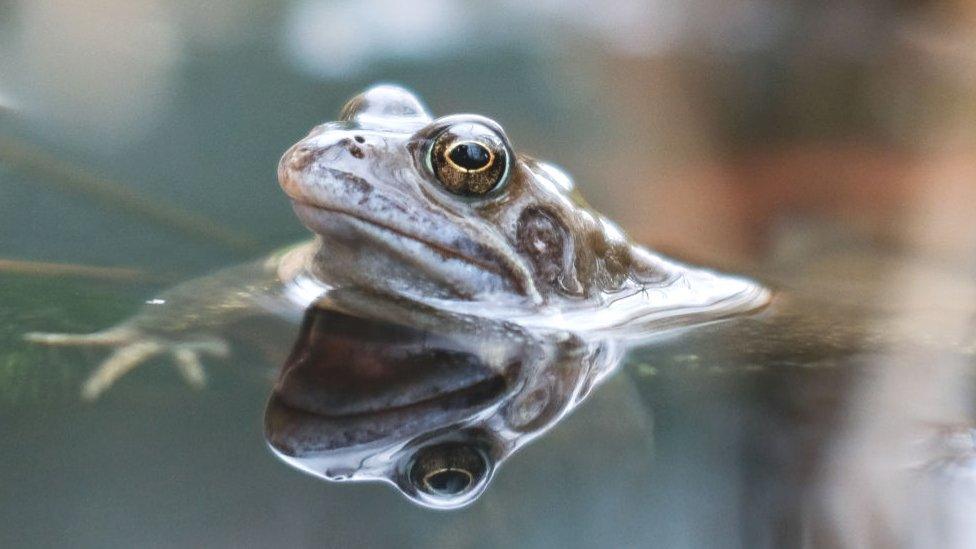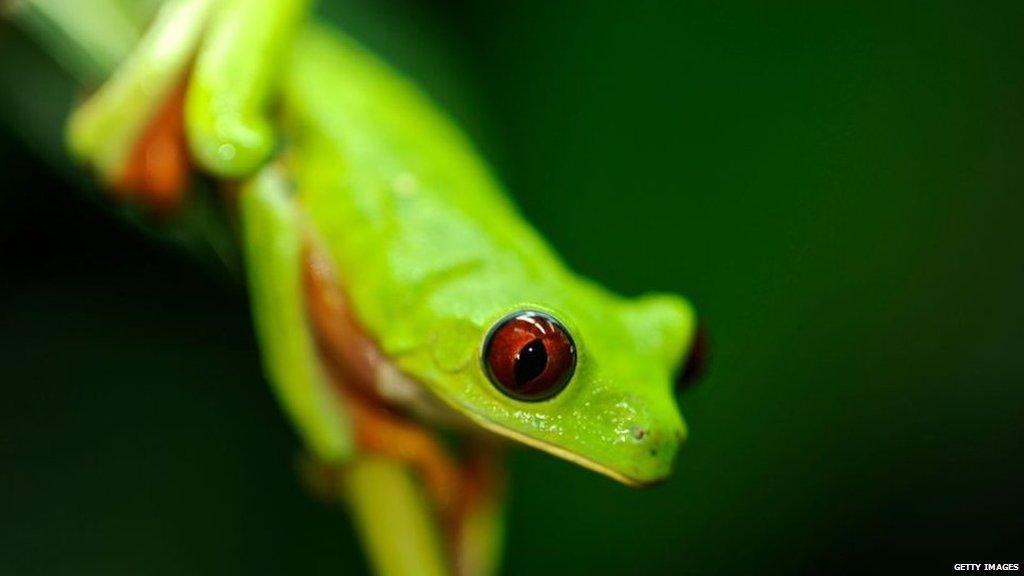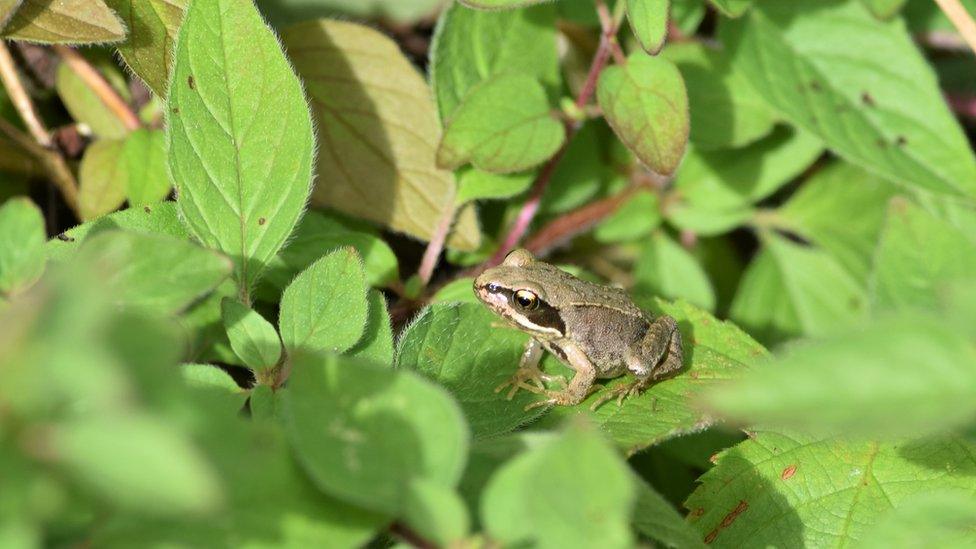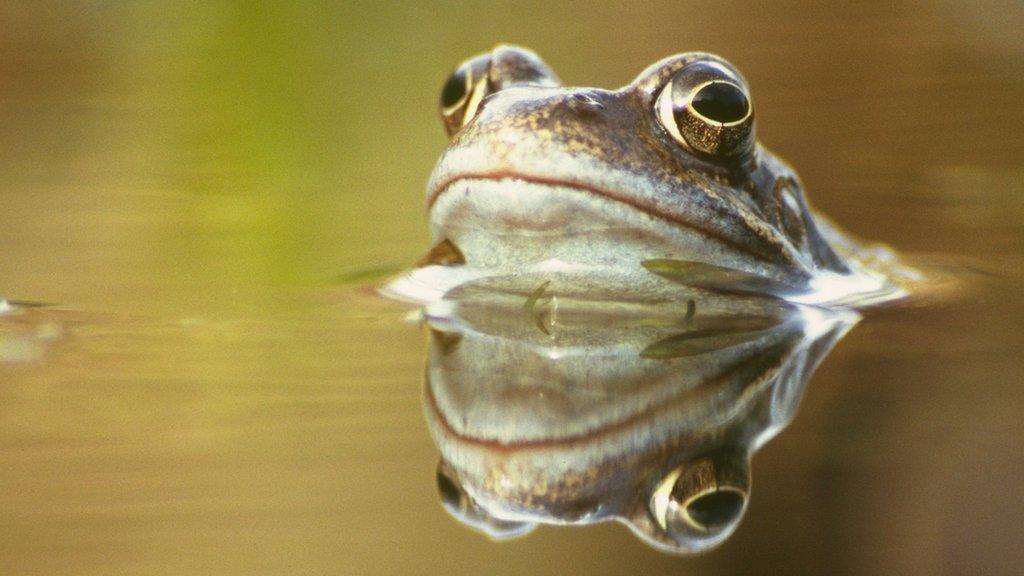'Friendly' bacteria could help save frogs from disease
- Published

Bacteria living on the skin of frogs could protect them against a deadly virus, according to research.
The work by scientists at the University of Exeter and Zoological Society of London could help save species such as the European common frog from being wiped out by a disease.
Amphibians have been hit particularly hard by changes in the natural world.
Up to 40% of species are close to dying out due to factors such as pathogens, habitat loss and climate change.
The British scientists looked at how common frogs are coping with ranavirus, which can kill a large number of frogs in a short time in UK ponds.

Red-eyed tree frog of Panama
They found a link between outbreaks of the disease and the make-up of bacteria on the frogs' skin in different populations across southern England.
This gives the first demonstration that in the wild there is a correlation between populations that get disease and populations that remain disease-free, and the mix of bacteria on the skin, said Dr Lewis Campbell from the University of Exeter.
"It's a silver bullet against the virus, potentially," he said.
The researchers hope the work could help save the frog species most often seen in UK ponds.

More stories you might like:
There is growing evidence that skin bacteria may protect amphibians from chytrid fungus, another deadly frog disease which is common around the world.
Cocktails of so-called friendly bacteria are being developed that might help protect frog species.
"Our work suggests that given enough effort and research, similar probiotic therapies may be effective against ranavirus," said Dr Xavier Harrison also from the University of Exeter.
The research is published in the journal, Frontiers in Microbiology, external.
Follow Helen on Twitter, external.
- Published10 May 2019
